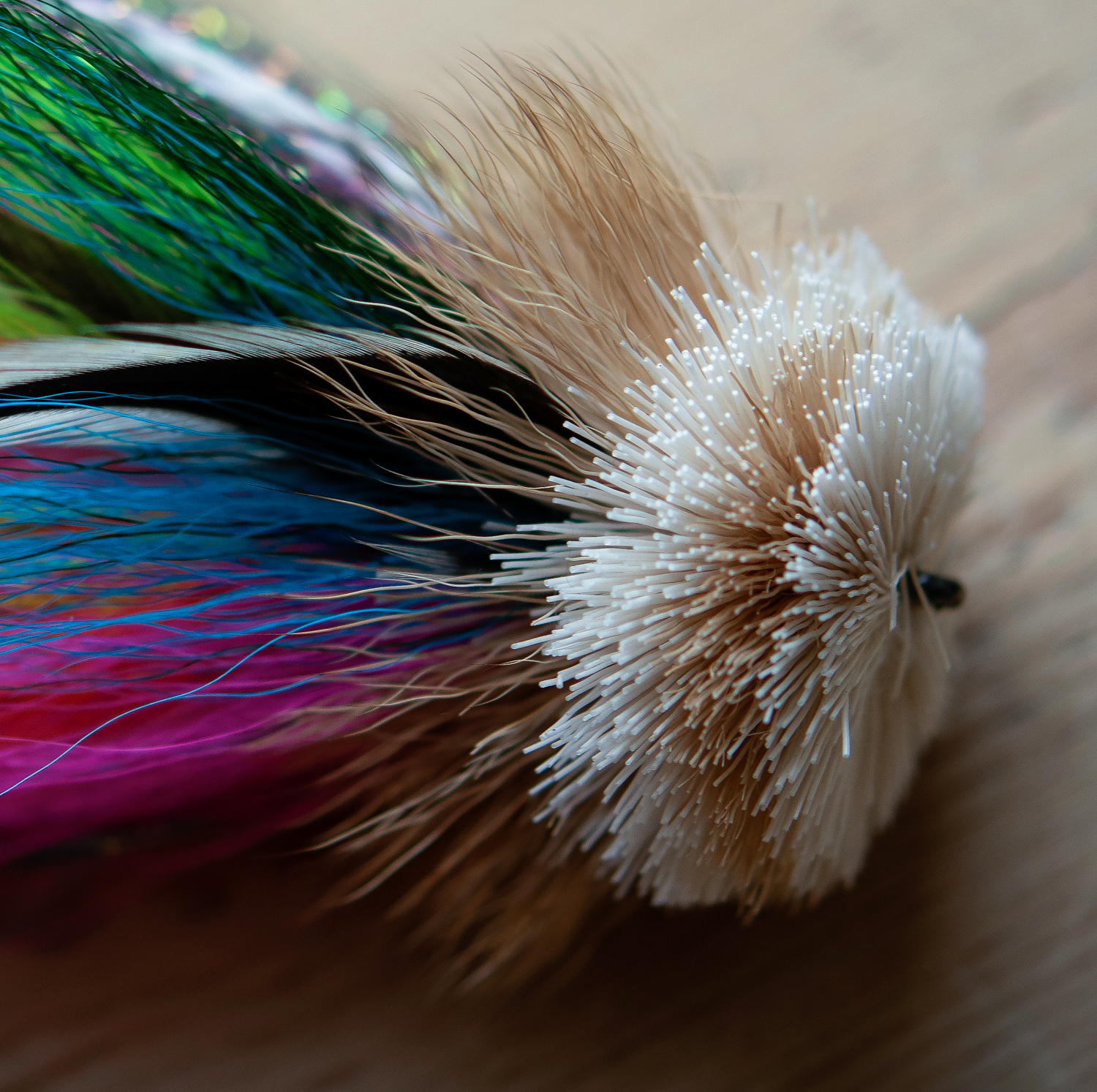
Fly tying materials come and go. Some pop up because they are trendy for a period – helped along by a sudden burst of interest from high profile tiers. Other materials reach a short popularity helped along by intensive marketing.
And then there are materials, that just are so freaking useful, that we can’t do without them. Bucktail is one of those. It is just a fantastic material, and you find so many different types of hair structures on one single bucktail.

Bucktail has always been a staple fly tying material for hair wings on streamers, saltwater flies and salmon, sea trout and steelhead flies. But tiers like Popovics and Bohen have tought us, that bucktail is ideal for creating large lightweight streamers – and for building volume and profile into the fly.

Popovics’ reverse tying techniques
Many of the new tying techniques are based on Bob Popovics’ reverse tied bucktail. This really is a tying technique you need to incorporate into your armoury of skills – and it will enable you to tie the cool Hollow Fleye and the Reverse Bulkhead/Hidden Bulkhead flies.

Bulkhead and Buford
Using the hairs on the lower part of the bucktail gives you a structure, that is somewhere in between regular bucktail hair and the body or belly hair used for spinning deer hair heads, muddlers and poppers. They will flare, but not as much as regular belly hair.
Using these hair, you can create flies like Popovic’s Bulkhead and Bohen’s Buford.

Videos from Brammer, Monaghan and Jensen
I’ve found a bunch of videos, that will show you why and how to use techniques like: reverse bucktail, hollow tie, bulkhead, reverse/hidden bulkhead and bufords. Check them out if you are into fishing large streamers for pike, musky, bass and other predators.
Have a nice weekend :0)
Michael
